- Health Conditions A-Z
- Health & Wellness
- Nutrition
- Fitness
- Health News
- Ayurveda
- Videos
- Medicine A-Z
- Parenting
- Web Stories
Missouri Resident Hospitalized With 97% Fatal 'Brain-Eating' Infection While Water-skiing: How Real Is The Risk At Home?
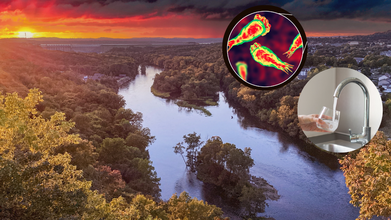
Credits: Health and me
A Missouri resident is fighting for life in the intensive care unit after contracting one of the rarest yet most deadly infections known to medicine: Naegleria fowleri, often referred to as the brain-eating amoeba. The case, traced back to waterskiing on the popular Lake of the Ozarks, has sparked renewed questions about how people can be exposed to this microscopic threat—and whether everyday activities like showering or drinking tap water could carry risks.
Naegleria fowleri is a single-celled organism that lives naturally in warm freshwater such as lakes, rivers, and hot springs. It thrives in temperatures between 77°F and 115°F, meaning it is more commonly found in waters during hot summer months when levels are low and temperatures rise.
Despite its frightening nickname, the amoeba doesn’t “eat” brains in a literal sense. Instead, when water contaminated with N. fowleri enters through the nose—often during swimming, diving, or watersports—the organism can travel to the brain. Once there, it causes primary amebic meningoencephalitis (PAM), a devastating infection that destroys brain tissue.
The U.S. Centers for Disease Control and Prevention (CDC) describes PAM as “almost always fatal.” In fact, the fatality rate exceeds 97%, with just four survivors out of 167 confirmed cases in the United States between 1962 and 2024.
How Does the Infection ?
The key factor is nasal exposure, not ingestion. Simply drinking contaminated water does not cause illness. The amoeba must enter through the nose and reach the brain’s olfactory nerves. This is why activities like:
- Waterskiing, wakeboarding, or diving in warm freshwater
- Swimming in poorly maintained pools or splash pads
- Using contaminated tap water for nasal rinses or Neti pots
are considered riskier than simply consuming the water.
Cases have even been linked to routine activities such as bathing or showering in places where water systems were contaminated. While rare, this route of exposure is considered possible if water is forced high into the nasal cavity.
What Are the Symptoms?
Symptoms usually develop within 3 to 12 days after exposure. They begin subtly, resembling common viral illnesses, but progress rapidly:
Early: headache, fever, nausea, vomiting
Later: stiff neck, confusion, hallucinations, seizures
Advanced: coma and death, typically within five days of symptom onset
This rapid progression makes timely diagnosis extraordinarily difficult. By the time PAM is suspected, the infection is usually advanced.
How Rare Is Brain-Eating Infection, Really?
The good news is that Naegleria fowleri infections are extremely rare. In the U.S., an average of just two to three cases per year are reported, despite millions of people swimming in warm lakes and rivers.
Globally, however, cases have been documented in more than 40 countries. A review up to 2018 found 381 cases worldwide, with a shocking 92% mortality rate. The highest number of cases were recorded in the United States, Pakistan, Mexico, and India. Australia, too, has documented outbreaks, particularly in regions with warmer climates.
Is It Safe To Drink Tap-Water?
One of the most unnerving aspects of Naegleria fowleri is when it shows up in municipal water supplies. In 2024, officials in Queensland, Australia, confirmed its detection in drinking water systems in the towns of Augathella and Charleville. So should Americans be worried about catching the infection from their tap? Here’s the science:
Drinking contaminated water does not cause infection. The digestive system neutralizes the amoeba.
Nasal exposure is the risk. Taking a shower, using a Neti pot, or even children playing with hoses or sprinklers could theoretically force water up the nose.
Proper water treatment works. Adequate chlorination and maintenance of municipal systems eliminate the risk.
In the U.S., isolated incidents linked to Neti pots used with unboiled tap water have been reported, underlining why the CDC stresses that nasal rinses must use distilled, sterile, or previously boiled water.
In Missouri, the patient’s exposure was likely tied to high-speed watersports on Lake of the Ozarks during a spell of hot weather. Waterskiing increases the risk because it forces water deeply into the nasal passages.
Officials have not reported other cases connected to the lake, emphasizing just how rare the infection is, even in favorable conditions. Still, the case has heightened awareness and anxiety, particularly as climate change increases the likelihood of warmer water temperatures in many regions.
How Can You Protect Yourself?
There is no guaranteed way to eliminate risk, but health experts offer several practical precautions:
- Avoid swimming in warm freshwater during heatwaves or when water levels are low.
- Keep your head above water in lakes, rivers, or hot springs.
- Don’t dive or jump in. Water forced up the nose is the main risk factor.
- Use nose clips if you plan to submerge in freshwater.
- Stick to saltwater or properly chlorinated pools. The amoeba cannot survive in these environments.
- Use sterile or boiled water for nasal rinses. Never rely on straight tap water.
The idea of a “brain-eating amoeba” is terrifying, but public health experts emphasize that the odds of infection are extraordinarily low. Millions of people swim in lakes every year without incident.
The far greater concern, they say, is that when cases do occur, they are often misdiagnosed as bacterial meningitis until it’s too late. Public awareness, while important, should be balanced with the reality that preventive measures—like avoiding nasal exposure to untreated warm freshwater—are usually enough.
The Missouri case is a tragic reminder of just how deadly Naegleria fowleri can be, but also how vanishingly rare it is. You cannot catch it by drinking tap water, and routine showers in well-maintained municipal systems are safe. The risk only arises when contaminated warm freshwater is forced into the nose.
For now, experts say vigilance, not panic, is the right response. With simple precautions, Americans can keep enjoying summer lakes and rivers while understanding the small but serious risks that come with them.
Billie Shepherd Opens Up About 'Horrendous' Diagnosis That Left Her Bed Bound

(Credit - billieshepherdofficial/instagram)
The beloved TV personality Billie Shepherd, well known for her role in the reality TV show, ‘The Only Way Is Essex’ recently opened up about her Lyme disease diagnosis. In an interview with The Mirror, she detailed how she ‘couldn’t even get out of bed’ and even had difficulty using the washroom.
She was diagnosed earlier this year, and it left her with chronic fatigue and debilitating pain. "I was in bits. I was hysterically crying, because I was in so much pain," she told The Mirror. "It was hard for me to sit on the toilet without Greg helping me. It was so scary."
What Is Lyme Disease?
The Cleveland Clinic explains that Lyme disease is caused by the bacteria Borrelia burgdorferi, which is transmitted to humans through the bite of an infected deer tick (also known as a black-legged tick). Ordinary "wood ticks" and "dog ticks" do not carry this bacteria.
The first cases were identified in 1975 in Lyme, Connecticut, when a cluster of children were diagnosed with what was initially thought to be juvenile rheumatoid arthritis. Researchers later discovered that the outbreak was linked to bites from infected deer ticks.
What Are The Signs And Symptoms Of Lyme Disease?
The symptoms of Lyme disease vary depending on the stage of the infection.
Early Symptoms of the disease can include Erythema migrans (EM) rash which is an expanding lesion that often looks like a bull's-eye. It appears at the site of the tick bite between one and four weeks after the bite. Other symptoms include,
- Fever
- Headache
- Stiff neck
- Body and joint aches
- Fatigue
- Swollen lymph nodes
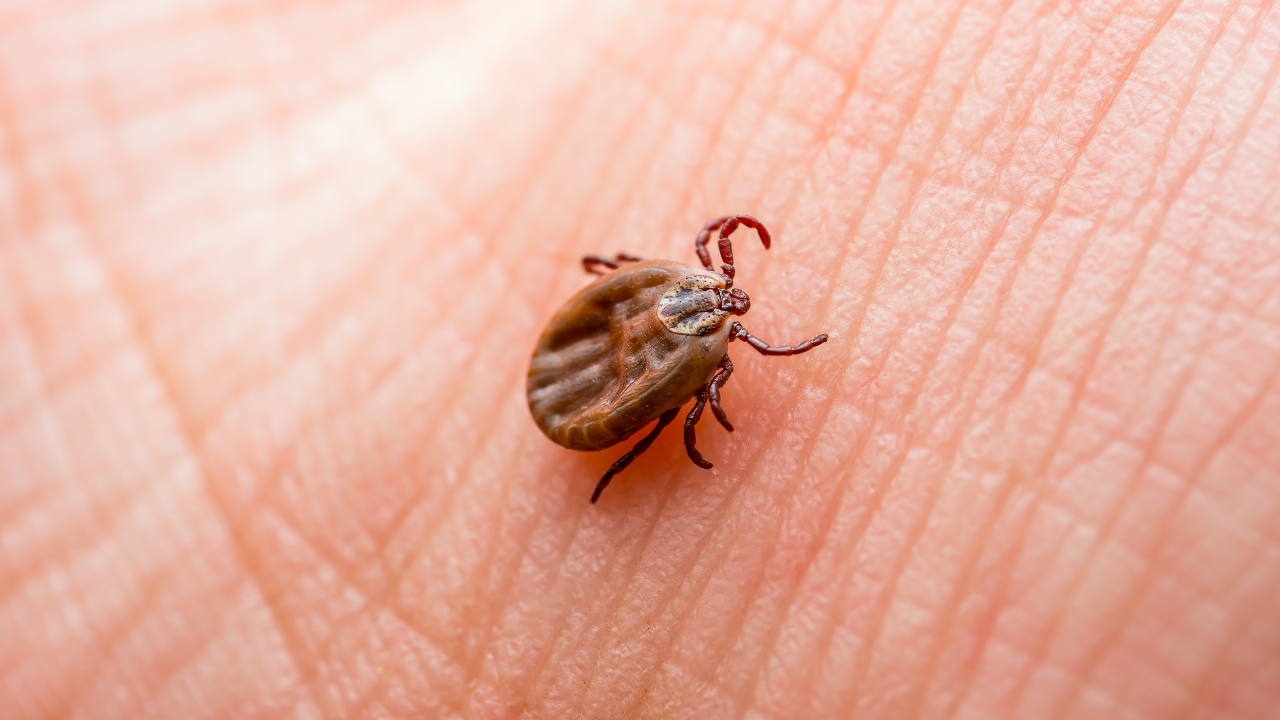
During the early disseminated stage of Lyme disease, symptoms can include multiple rashes, paralysis of facial muscles known as Bell's palsy, an irregular heartbeat, and sensations of numbness or tingling. If left untreated, the late stage of the disease can manifest with recurring episodes of swollen joints, especially in the knees (arthritis), difficulty concentrating often called "brain fog," and widespread nerve damage (polyneuropathy).
How Is Lyme Disease Diagnosed?
Shepherd detailed how getting to the diagnosis was not easy. She explained how it took two months and numerous blood tests for doctors to diagnose her.
A healthcare provider will diagnose Lyme disease based on symptoms, a physical exam (including checking for a rash), and your potential exposure to tick-infested areas. It's important to note that many people don't remember being bitten because the ticks are tiny and their bites are often painless.
The diagnosis is confirmed with a blood test. If the initial test is positive or inconclusive, a second test is performed. A diagnosis of Lyme disease requires two positive or inconclusive test results
Billie explained how her healthcare professionals believe she may have been bitten by a tick as long as three years ago, with the infection remaining dormant until recently. While Lyme disease is typically treated with antibiotics, Shepherd's symptoms were initially exacerbated by the medication.
What Should You Do If A Tick Bites You?
If a tick bites you, follow these steps to remove it safely:
- Use blunt tweezers to gently but firmly pull the tick near its "head" at the skin's surface until it releases.
- Avoid crushing the tick's body or touching it with your bare fingers to prevent exposure to the bacteria.
- Wash the bite area thoroughly with soap and water.
- Do not use home remedies like kerosene, petroleum jelly, or a hot cigarette to remove the tick.
Measles Cases Surge Worldwide, Korean Health Data Flags Countries At Highest Risk For Travellers
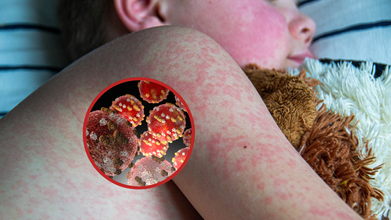
(Credit-Canva)
Health officials around the world are warning travelers about a sharp increase in measles cases. The Korea Disease Control and Prevention Agency (KDCA) is urging everyone to be fully vaccinated before traveling abroad, as many recent cases in Korea have been from travelers returning from other countries.
Globally, measles cases have surged, with the World Health Organization (WHO) reporting around 360,000 cases in 2024. This is largely because of a drop in vaccination rates, which were disrupted during the COVID-19 pandemic
What Should Travellers Be Aware Of?
According to the KDCA, many of these infections came from countries with ongoing measles outbreaks. The number of global measles cases jumped to about 360,000 in 2024, as vaccination efforts were disrupted by the COVID-19 pandemic. The countries linked to the most imported cases are:
- Vietnam
- South Africa
- Uzbekistan
- Thailand
- Italy
- Mongolia
For travelers heading to these regions, the KDCA strongly recommends getting both doses of the measles, mumps, and rubella (MMR) vaccine. This is especially important for adults who may have missed their second dose as children.
Countries That Have The Highest Measles Cases
According to a Pan American Health Organization (PAHO) report released on 15th August, there have been 10,139 confirmed cases and 18 deaths across ten countries, a 34-fold increase compared to the same period in 2024. The countries with the highest number of confirmed cases are:
- Canada (4,548 cases)
- Mexico (3,911 cases)
- United States (1,356 cases)
Cases have also been reported in Bolivia, Argentina, Belize, Brazil, Paraguay, Peru, and Costa Rica. Sadly, there have been deaths in Mexico (14), the U.S. (3), and Canada (1). In Mexico, most of the deaths happened in Indigenous communities, which have been severely affected. Canada also reported the tragic death of a newborn.
The outbreaks are being caused by two different types of the measles virus. One type is spreading quickly among Mennonite communities in eight countries. This shows how fast the virus can move through groups that are not vaccinated. While the outbreaks have mainly been in these communities, more and more cases are now being found in other groups of people as well..
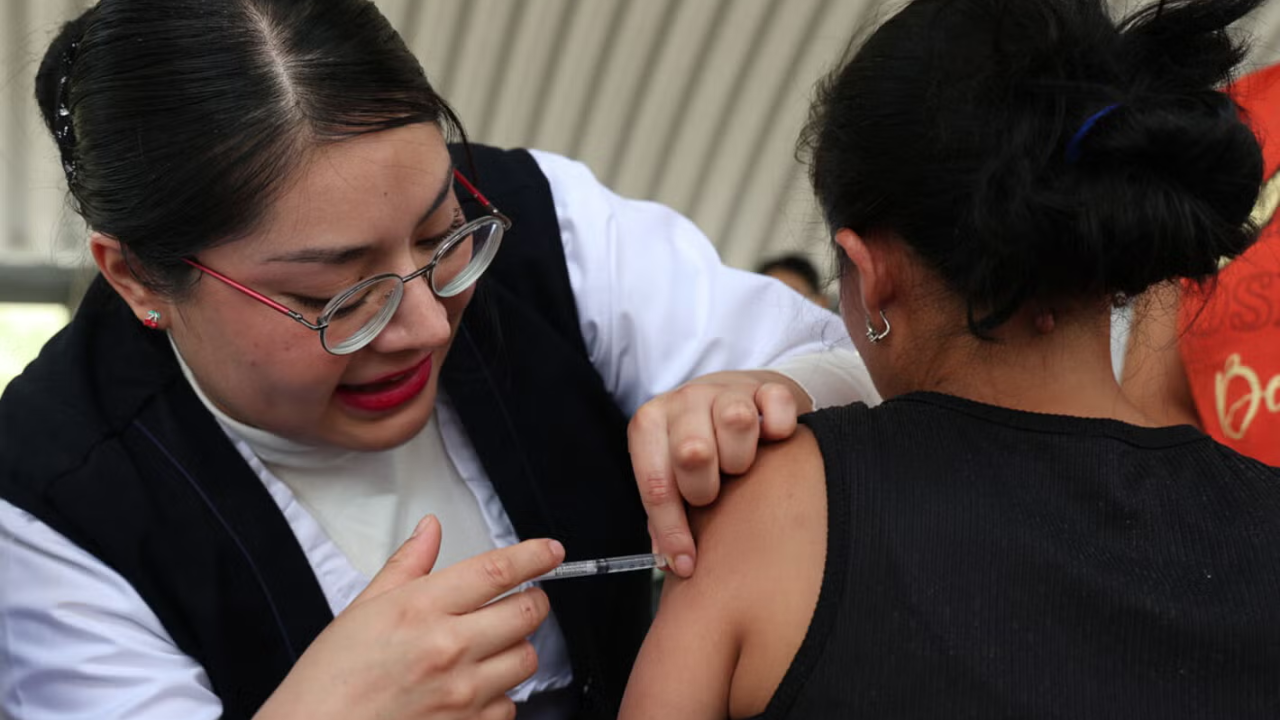
Why Do You Need Measles Vaccine?
Measles is a very contagious illness that can spread easily through the air. While most people think of it as a childhood disease, it can cause serious problems like pneumonia or brain swelling. It's especially dangerous for young children, pregnant women, and people with weak immune systems.
The MMR vaccine is the best way to protect yourself and others. Officials strongly recommend getting both doses, especially if you plan to travel. The KDCA also advises anyone who develops a fever or rash within three weeks of returning to Korea to take immediate precautions: wear a mask, limit contact with others, and tell medical staff about your recent travel before seeking care.
What Steps Have The Countries With Measles Outbreak Taken?
According to PAHO,
- Measles is still spreading in several provinces of Canada, including Alberta and British Columbia.
- In Mexico, the government has launched a mass vaccination campaign in 14 high-priority areas, with a special focus on Indigenous communities in Chihuahua, where most of the country's cases are located.
- In United States, outbreaks have been reported in 41 states, mainly among under-vaccinated populations.
- Most cases of Bolivia are in the Santa Cruz area, affecting both the general population and Mennonite communities.
- Argentina and Belize have not reported any new cases since late June.
PAHO is working with these countries to boost vaccination rates and quickly respond to new outbreaks. While travel restrictions aren't recommended, travelers are advised to ensure they are vaccinated, including young children from 6 to 11 months old, who can get an early dose for protection.
Flu Nasal Sprays Now Available For At-Home Delivery: Know Risks, Precautions And Side Effects

(Credit-Canva, FluMist)
As harmless as it may seem, flu has been classified as high severity in 2024-25 across all ages, according to the National Foundation for Infectious Diseases (NFID). Amidst the rising number of cases, we may have an easy at-home way to deal with it.
AstraZeneca has launched FluMist Home, a new service that delivers the FLUMIST nasal spray flu vaccine right to your house. This is a game-changer, as it's the first time an influenza vaccine can be sent directly to customers for at-home use.
FLUMIST, a needle-free nasal spray, has been approved by the FDA since 2003. Now, it is also the first flu vaccine approved for people ages 18-49 to give to themselves, or for parents and caregivers to give to children ages 2-17. This new service aims to make it easier for people to get vaccinated and stay protected, especially after the last flu season was one of the worst in years.
Will This At-Home Service Help Lower Flu Cases?
According to NFID, 47 million flu related, 21 million medical visits, 610,000 hospitalizations and 27,000 deaths, which include 266 pediatric deaths happened during the flu season of 2024-25.
AstraZeneca and healthcare experts believe this new service will help more people get vaccinated. It makes flu shots more convenient and removes the need to go to a doctor's office or pharmacy.

Who Should Not Take the Flu Nasal Spray?
According to the FluMist Safety Information available on their site, you should not get the FLUMIST vaccine if any of the following apply to you:
- You have a severe allergy to the vaccine's ingredients, to eggs, or to other flu vaccines.
- You are a child or adolescent between 2 and 17 years old and are currently taking aspirin or aspirin-containing medicines. Children in this age group should not be given aspirin for four weeks after getting FLUMIST unless a doctor says it's okay.
- You are under 2 years old, as there's a higher risk of wheezing (trouble breathing) in this age group after getting the vaccine.
What Precautions Do You Need For the Flu Nasal Spray?
For the 2025-26 flu season, FluMist Home is available in 34 states. AstraZeneca plans to expand the service to all 48 states in the future. FLUMIST will still be available at doctors' offices and pharmacies. Before getting FLUMIST, it's crucial to tell your healthcare provider about all your medical conditions. This includes if you:
- Are currently wheezing or have a history of wheezing (especially if you're under 5 years old).
- Have asthma.
- Have a weakened immune system or live with someone who has a severely weakened immune system.
- Have had Guillain-Barré syndrome (a condition that causes severe muscle weakness).
- Have problems with your heart, kidneys, or lungs.
- Have diabetes.
- Are pregnant or nursing.
- Are taking antiviral drugs to treat the flu.
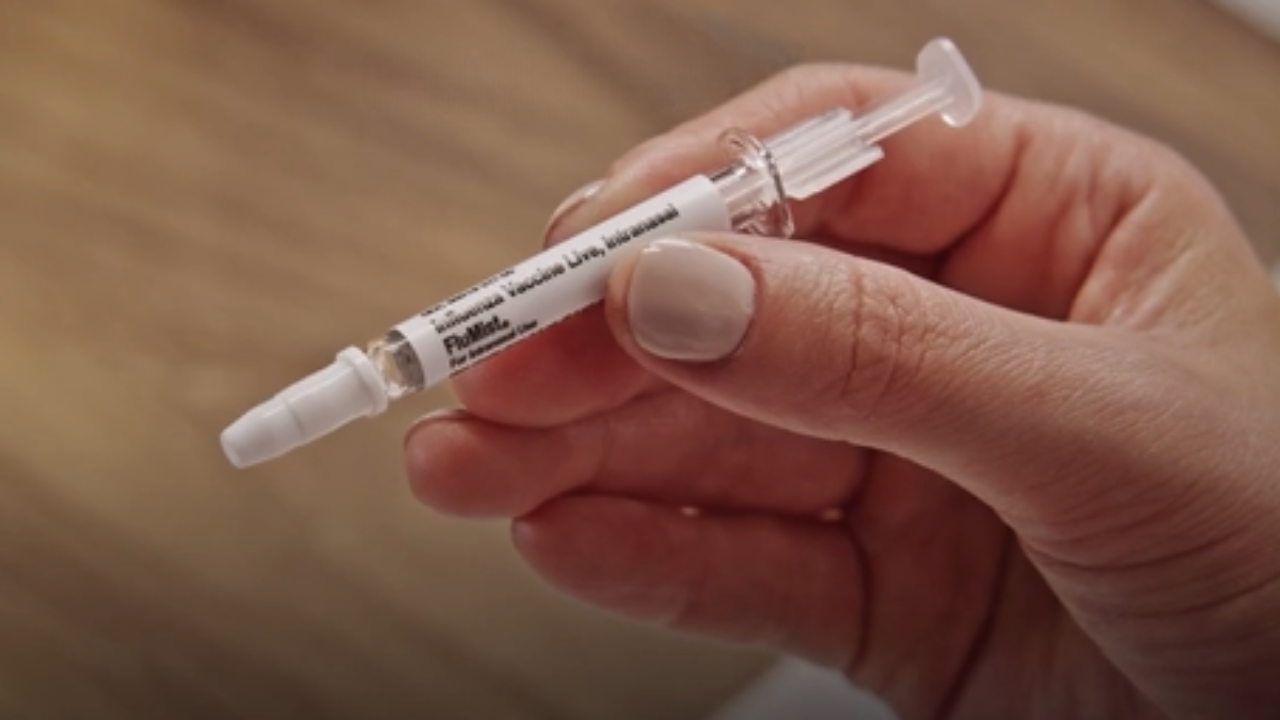
What Are The Side-Effects of The Flu Nasal Spray?
While most side effects are mild, FLUMIST can cause rare but serious reactions. The most common side effects are a runny or stuffy nose, sore throat, and a fever over 100°F.
Rare, serious side effects can include allergic reactions. If you experience hives, swelling of your face, lips, eyes, tongue, or throat, or have trouble breathing, seek medical help immediately.
© 2024 Bennett, Coleman & Company Limited

